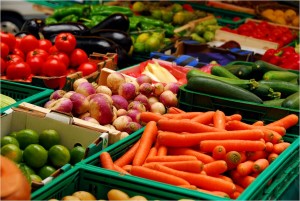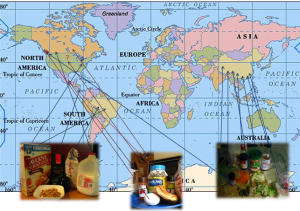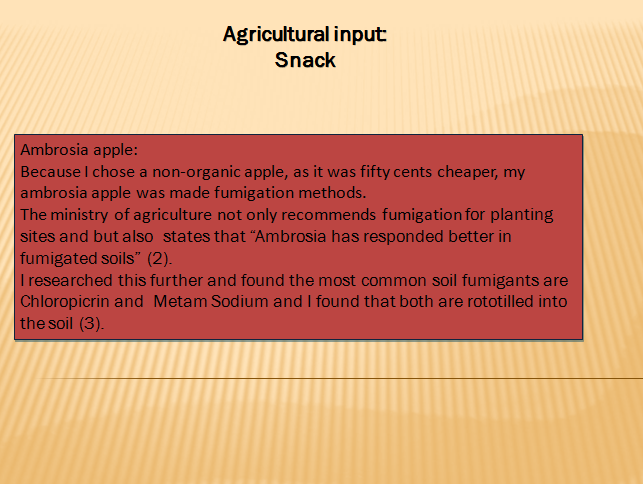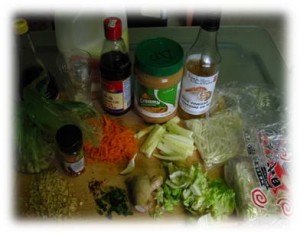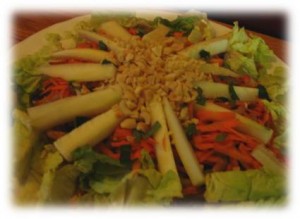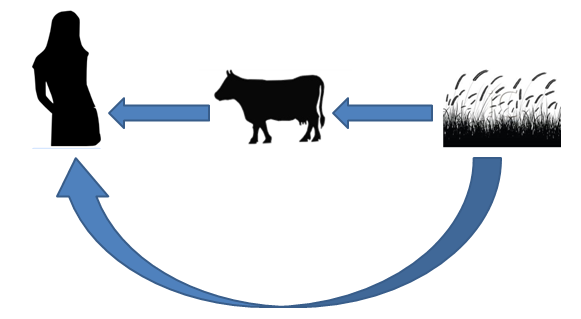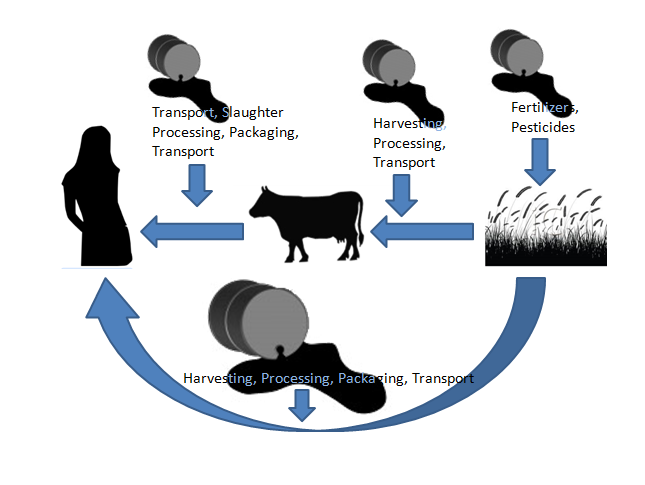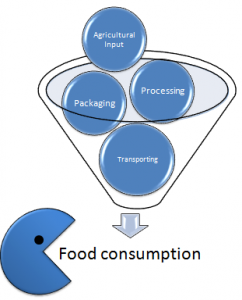Through my research and subsequent discoveries I realized a few things.
First, it is very difficult to track food.
You have to research every step a food item (or its ingredients) has taken. There is no map that says: here’s how bread is made, where it tells the path of all the ingredients (or else I didn’t find one). There are no labels on packages that declare where the ingredients are from. The company websites certainly don’t tell you. At best, you can only trace the food to the closest warehouse.
Even if this information was given, it wouldn’t help people realise the amount of fossil fuel that went into their food.
I myself did not realise how much fuel was used. I didn’t know how processed my food was; even my fruit was sent to a plant. I also did not realise how much fuel went into the whole process. The fertilizers use fuel, the tractors use fuel and the mining (to get the metals for the the machines in the process) and drilling processes (to get the fuel for the machines) depend on fuel, transport uses fuel etc. Basically, every step of food production depends on fuel.
Therefore, every step damages our world. Higher global temperatures, dead zones, dust storms, famines, droughts, are all the results of our agricultural system. As since our agricultural system depends on fuel, it is the fuel that is the underlying cause of the problems.
Furthermore, I realised that much of my food was grown in third-world countries. Therefore, I was eating food that could have gone to much better use in the countries where they were from.
These realizations reminded me of George Kennan’s quote in Manning’s article. He stated, in reference to the United States role as the world’s superpower, that “[we] need not deceive ourselves that we can afford today the luxury of altruism and world-benefaction.”
While it seems like companies and perhaps governments accept this statement, individuals do not. We are still deceived. As company websites and food packages do not declare where our food is from and it is nearly impossible to trace, it is very difficult for us to figure out that something is wrong.
When I pause to think about the food system, like I was able to do in this blog, I realise that something must be done. I’m sure that if other people were to study our food system they would also realise that our entire system needs to change. We need to have a food system that can afford altruism and world benefaction. However, this system must be functional in a 21st century world.
While I do not know what I new system would look like, I know that large number of people are now asking for change. I hope that, in the future, I can learn about this new food system and be satisfied in terms of fuel input and world-consideration.

